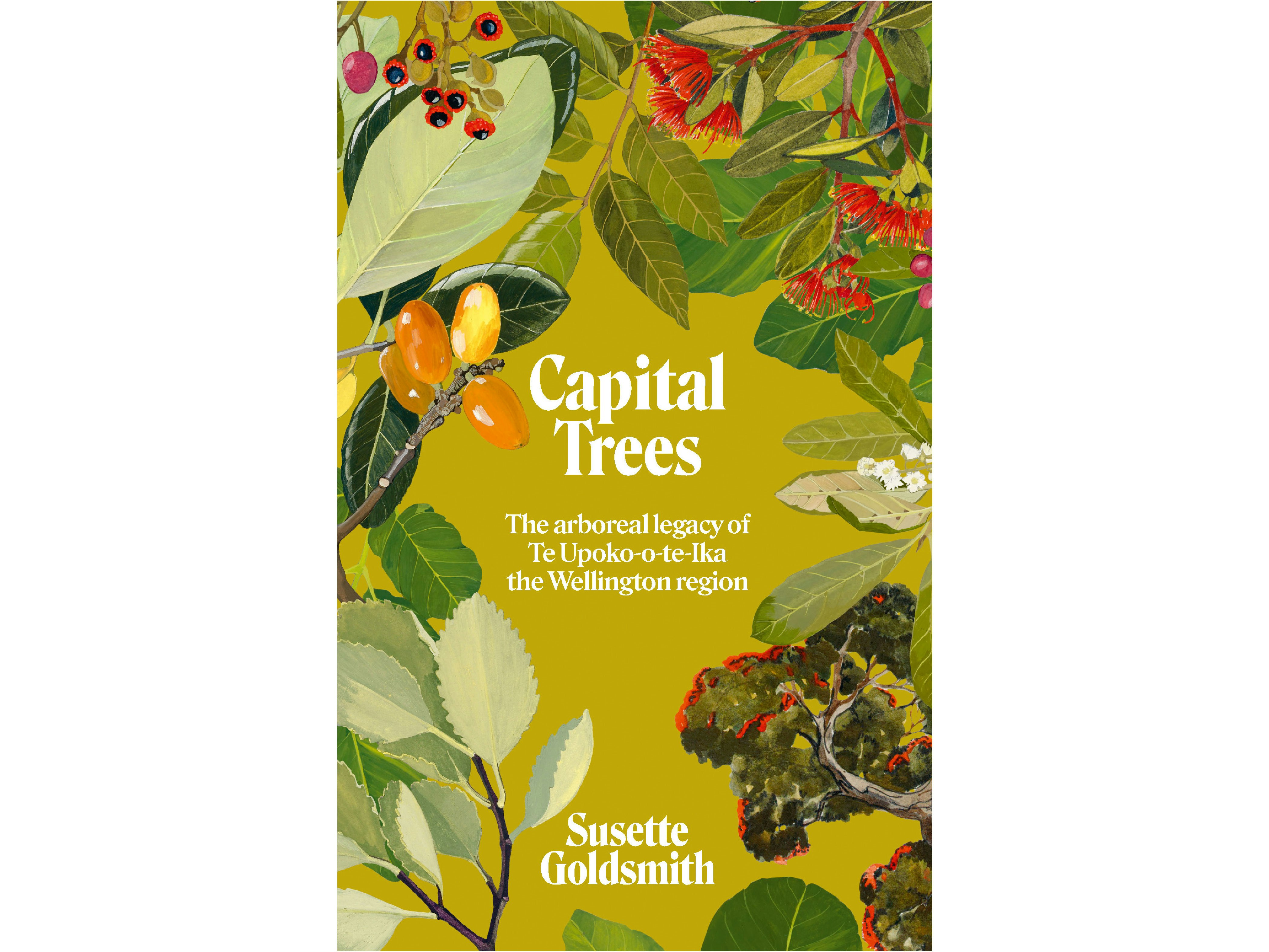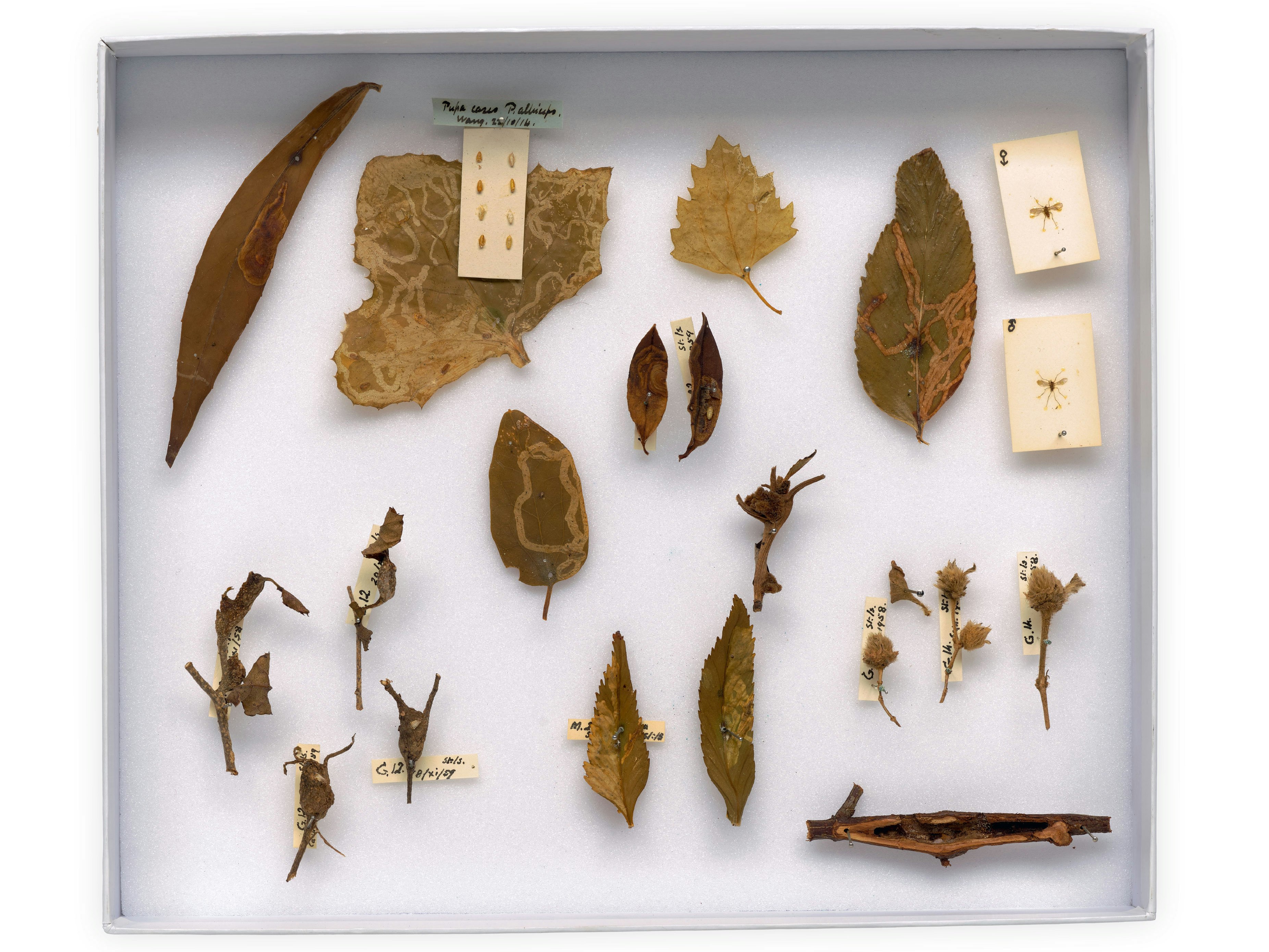
Capital Trees: The arboreal legacy of Te-Upoko-o-te-Ika the Wellington region
The significance and meaning of trees engagingly explored through the way they have shaped our capital.
Free museum entry for New Zealanders and people living in New Zealand
Open every day 10am-6pm
(except Christmas Day)
Free museum entry for New Zealanders and people living in New Zealand
Susette Goldsmith discusses Capital Trees: The arboreal legacy of Te Upoko-o-te-Ika the Wellington region with Te Papa Press.
Susette Goldsmith is of Ngāti Māhanga and Pākehā descent and lives in Wellington. She is an independent writer and editor of non-fiction and an Adjunct Research Fellow at the Stout Research Centre for New Zealand Studies, Te Herenga Waka Victoria University of Wellington where she gained her PhD. Her scholarly research explores new ways of perceiving, interpreting and safeguarding natural heritage in twenty-first-century Aotearoa New Zealand, and her current focus is on our arboreal heritage. She has edited many museum, art gallery and scholarly books and monographs and, as a qualified and experienced journalist, has written articles and regular columns for diverse publications. She has published three social histories: The Gardenmakers of Taranaki, Tea: a potted history of tea in New Zealand and Suzy’s: a coffee house history, and edited and contributed to the essay collection Tree Sense: ways of thinking about trees.
My research interest is natural heritage which, of course, includes trees. In Aotearoa we tend to focus on built heritage in official decision-making even though it’s our natural heritage that makes our home so distinct from other parts of the world. In the introduction to Capital Trees I explain how a talk with a group of students prompted me to find out more about our relationships with our trees.
Aotearoa is home to trees with lineages that stretch as far back as 190 million years or more, to the continent of Gondwanaland. Like all parts of Aotearoa, therefore, Wellington is a place of deep history and rich biodiversity. This legacy is evident in the ancient Tītahi Bay fossilised podocarp forest, at Ōtari Wilton’s Bush where 800-yearold rimu Moko is thriving, in Upper Hutt where the two towering northern rātā, Karapoti and Whakatikei are estimated to be well over 1000 years old and perhaps as much as 1500 years or more, and at Zealandia Te Māra Tāne where the aim is to create self-sustaining ecosystems as close as possible to those that existed In Aotearoa 1000 years ago. There is another side to this discussion that is not as cheerful but needs to be acknowledged and concerns the harm done to trees. The pōhutukawa trees on the lawn of Parliament buildings set on fire during the 23-day occupation of the parliamentary precinct in 2022 are one example, the black poplar (Populus nigra) in Lower Hutt that suffered 18 drill holes filled with poison and died two years later, is another.
Māori have continuously resisted Pākehā exploitation of the indigenous ngahere and early on introduced a plentiful food resource of karaka (Corynocarpus laevigatus) to the region. The nineteenth-century Wellington Scenery Preservation and Tree Planting Society, the region’s many early twentieth-century beautifying societies, the Wellington Botanic Garden and the local authorities of the region have all influenced – in different ways – which trees have been planted and which preserved. In the twenty-first century we have a deeper understanding of environmental values, and the Wellington region is enjoying the Zealandia Te Māra Tāne eco-sanctuary and the work of passionate and enthusiastic eco-activists in numerous native forest conservation and regeneration projects on both the mainland and offshore islands.
The term ‘fake native tree’ in Wellington is a rather derogatory reference to trees that are native to Aotearoa but are non-indigenous to the region. Although they are native trees, when considering the biodiversity of the region they are deemed by some to be ‘fake’. Pōhutukawa (Metrosideros excelsa), which has been planted prolifically in Wellington City, is a remnant of a time when the term ‘biodiversity’ was not so well known. Some Wellingtonians look forward to the many trees’ summertime show of red; others dread their indiscriminate dispersal of seed.
ITrees as monuments can be protected by listing on a council tree register either individually or as part of a heritage precinct. But listing does not offer total protection. One example is the Museum Street Tree planted in the 1860s and now something of a monument to the original Government House gardens. It is registered on both the New Zealand Tree Register and the Wellington City Council tree registers and in 2023 was shifted 30 metres to make way for new parliamentary buildings. As noted, trees are vulnerable like all living things to age and climate and in Wellington exotic trees planted as monuments have become particularly vulnerable as kākā numbers have increased and stripped bark from the trees’ branches. Arboreal heritage cloning is one way of perpetuating trees as monuments and the Lone Pines at Government House and Pukeahu are two examples.
Examining our relationships with our tree heritage requires some actual engagement. This is not about tree hugging but about ‘being there’ sharing the same space, taking in the context (human and non-human) and the specialness of each tree. Being in Whitemans Valley with the residents, hearing their distress and seeing the magnificent doomed tawairauriki (Nothofagus solandri) trees stripped of branches ready for destruction was riveting. As was gazing up into Moko’s 800-year-old canopy and walking by the remnants of the sub-fossil tree stumps of Titahi Bay. It was important to me to be able to describe these actual experiences for readers unable to ‘be there’.
I knew I wanted to include the herbarium as a tree heritage ‘collection’, but I wasn’t prepared for the significant contribution the specimens make towards decision-making regarding conservation as we face climate change. Not only locally but globally as well. The herbarium is bursting with knowledge – as are its curators who were keen to share their information. The photographs included in the book of beech specimens collected in 1770 by Joseph Banks and Daniel Solander, in 1931 by Dominion Museum Director WRB Oliver and by Wellington botanist Eleanor Burton in 2018 demonstrate that although the specimens are dead, the herbarium is very much alive and growing. This is important in the broader context of the book. Heritage is not history itself. It’s what we make of our history, in this case through specimens of trees.
Yes, they do in a general sense. The challenges of individual tree or forest conservation, tree heritage registration, biodiversity, forest regeneration, and the destruction of trees are issues that all Aotearoa faces. And all parts of Aotearoa benefit from the trees’ capture and storage of carbon and their essential contribution to our quality of life.
It would have to be the ancient Tītahi Bay subfossil forest. When this forest was thriving, the trees grew in a swampy valley, then, when both the climate and sea levels rose, the forest’s valley was drowned and covered with marine sands and gravels. These stumps are radiocarbon-dated as more than 35,000 years old. These are trees that make you ponder upon your own mortality and comparative insignificance. These are trees that make you think.
One important point I hope I have articulated clearly in the book is that there’s much more to the rich tree heritage of Wellington than what we can find on any official list. With this in mind I have suggested that we extend our definition of tree heritage beyond official lists and, in the face of potential tree destruction, consider shifting the onus of proof of heritage value from inclusion to exclusion. Let’s be bold and make all Wellington a site of tree heritage. A second point is that tree heritage is not history but what we select from our history to respect and celebrate. An example of this is the grove of karaka on the Wellington waterfront. These trees tell the story of Te Aro Pā which was occupied until the late nineteenth century. The grove was planted in 1999. Te Papa’s herbarium is another example where ongoing collection of specimens expands our understanding of our tree heritage. Books about trees are often read by people who are well informed about trees and already appreciate them. I hope that all readers, however, will find some parts of the book lead them to greater understanding of our capital’s trees, and a richer appreciation of Aotearoa’s tree heritage in general.

The significance and meaning of trees engagingly explored through the way they have shaped our capital.


Books about the unique and incredible natural environment and science research of Aotearoa New Zealand.